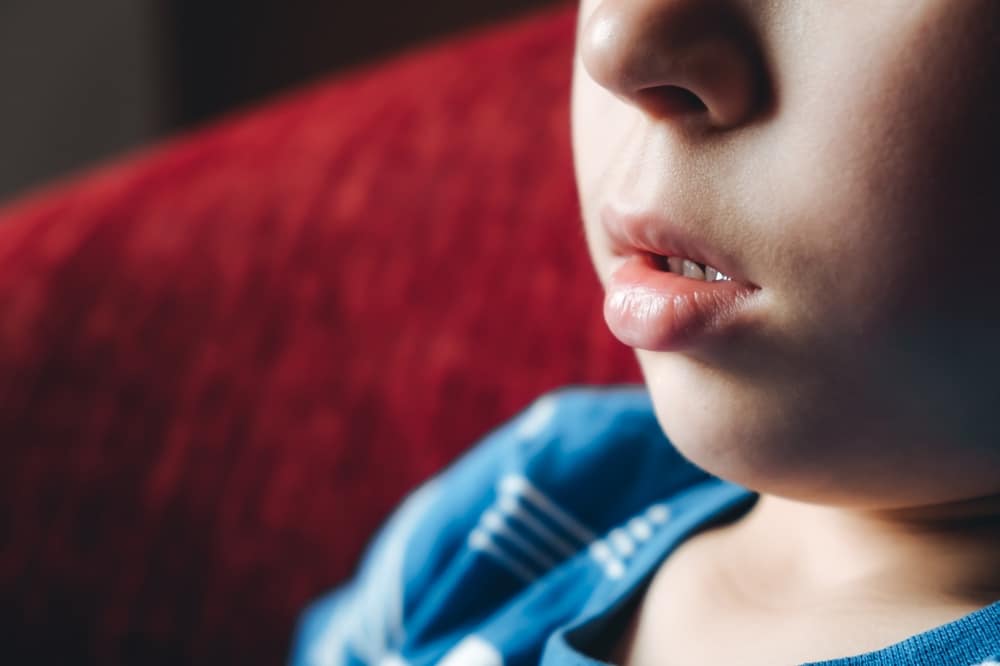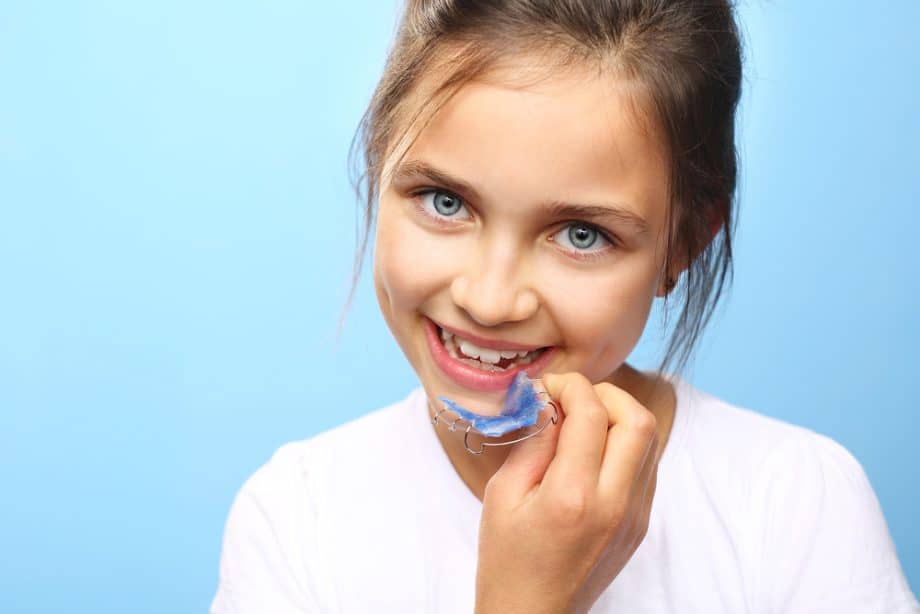Crooked Teeth and Your Airway – How Are They Connected?” might seem like a question about dental aesthetics, but it goes much deeper. Many people with misaligned teeth hide their smiles in photos and feel self-conscious in social settings, not realizing these dental issues can also significantly impact their breathing.
This article explores the often-overlooked link between crooked teeth, your breathing and airway health, shedding light on why addressing this problem is about more than just achieving a straighter smile—it’s essential for better overall health and well-being.
Crooked Teeth and Their Common Causes
Crooked teeth, a common dental concern, stem from several factors that can affect both children and adults. Understanding these causes is crucial for prevention and effective treatment.
- Genetic Factors: Much like eye color or height, the alignment of your teeth is often inherited. If parents have crooked teeth, their children are more likely to have them too.
- Poor Dental Habits in Childhood: Habits such as thumb sucking, prolonged use of a pacifier, and extended bottle feeding can exert pressure on teeth and jaws, leading to misalignment.
- Premature Loss of Baby Teeth: When baby teeth are lost too early, due to decay or injury, the remaining teeth can drift into the empty space. This movement can block permanent teeth from erupting correctly in place.
- Inadequate Nutrition: Poor nutritional habits, especially during the critical growth periods of a child’s life, can hinder dental development and lead to crooked teeth.
- Trauma: Accidents that impact the jaw can disrupt the natural growth and positioning of teeth.
- Poor Jaw Development: Some people have jaws that are too small to accommodate all their teeth comfortably, causing overcrowding and misalignment.
By addressing these factors early, through preventive and interceptive orthodontics with a knowledgeable orthodontics, the risk of developing crooked teeth can be significantly reduced or prevented. Understanding these causes also helps in choosing the right treatment options for correcting misalignments and improving oral health and facial development.
How Crooked Teeth Affect Your Breathing
Crooked teeth do more than just impact your smile; they can also make it harder to breathe properly. Here’s how these issues are connected:
- Blocked Airway: If your jaw is out of alignment due to crooked teeth, it might narrow the space for the tongue making it tough to breathe. This can cause snoring or even sleep apnea.
- Tongue Placement: Misaligned teeth can force your tongue into a position that blocks your airway when you sleep, disrupting your breathing.
- Mouth Breathing: People with crooked teeth often keep their mouths open because it feels more comfortable. Breathing through your mouth all the time skips the important air filtering your nose does, which isn’t great for your lungs or overall health. In a growing child, mouth breathing might lead to open bite and tongue thrust and might alter the growth of the whole face.
- Sleep Disruption: These breathing problems can mess with your sleep, leaving you tired and affecting your mood and ability to think clearly during the day.
Straightening your teeth and develop dental arches aren’t just about a better-looking smile. It helps keep your airway open while you sleep, ensuring you breathe better and improve your overall health.
How Does Mouth Breathing Impact Crooked, Crowded Teeth?
Mouth breathing can have a significant impact on dental health, particularly when it comes to crooked or crowded teeth. Here’s a breakdown of how mouth breathing affects your teeth and jaw alignment:
- Facial Structure Development: Chronic mouth breathing can alter facial development. For children, it can lead to a longer, narrower face and palate, which doesn’t leave enough room for teeth to grow in straight. This can cause or worsen crowding and misalignment.
- Dry Mouth: Breathing through your mouth dries out the oral cavity. Saliva is crucial for neutralizing acids and washing away food particles. Without enough saliva, the risk of tooth decay and gum disease increases, potentially exacerbating problems with crooked or crowded teeth.
- Gum Health: Mouth breathing can lead to gum disease because dry gums are more susceptible to infection. Gum disease can affect the stability of teeth, contributing to how crooked or crowded they may become.
- Orthodontic Complications: For those wearing braces, mouth breathing can complicate orthodontic treatment. The dry environment can increase discomfort and affect the fit and effectiveness of orthodontic appliances.
Addressing mouth breathing early can help mitigate these issues, ensuring healthier development and alignment of the teeth. If you or your child are mouth breathers, we at Castle Hills 3D Orthodontics can help.
Mouth vs. Nasal Breathing
Understanding the differences between mouth and nasal breathing is crucial for recognizing their impacts on dental and overall health.
- Air Filtration and Humidification: Nasal breathing naturally filters and humidifies the air we breathe, which protects the lungs and improves the quality of air entering our body. Mouth breathing bypasses these natural filters, allowing colder, drier, and dirtier air to enter directly into the lungs.
- Oxygen Exchange: Nasal breathing enhances oxygen exchange. The nose produces a molecule called nitric oxide, which increases the ability to absorb oxygen. Mouth breathing, lacking this molecule, results in less effective oxygen absorption by the body.
- Dental Health: Nasal breathing supports proper oral posture with the tongue resting against the palate, promoting healthy jaw and teeth alignment. Mouth breathing, on the other hand, often leads the tongue to a lower position, contributing to abnormal dental development, such as crooked or crowded teeth.
- Overall Health Impact: Chronic mouth breathing can lead to snoring and increase the risk of sleep apnea, which affects sleep quality and overall health. Nasal breathing is more conducive to a restful sleep and can improve cognitive function and energy levels.
Recognizing these differences highlights why promoting nasal breathing from an early age is important for both dental alignment and general health.

Treatment Options
Addressing crooked teeth and associated airway issues involves various orthodontic treatments, with a strong emphasis on early preventive orthodontics
- Early Orthodontics: Initiating treatment during childhood leverages natural growth, guiding proper jaw and teeth development. This approach can prevent severe misalignments and reduce future complications, enhancing both oral health and airway function.
- Braces: Traditional braces effectively shift teeth into proper alignment, improving both aesthetics and oral function.
- Clear Aligners: These removable appliances like Invisalign or Sparks Aligners are nearly invisible aligners that offer a convenient and discreet option for straightening teeth.
- Jaw Repositioning Appliances: Used to correct jaw misalignments, these devices can also enhance airway openness during sleep.
- Surgical Options: In severe cases, surgery may be necessary to properly align the jaws and teeth, improving both functionality and airway flow.
Early orthodontic assessments are crucial for timing treatment to achieve the best outcomes, promoting healthier breathing and a more balanced facial appearance.
What is Early Orthodontics?
Early orthodontics involves assessing and treating children’s dental and jaw alignment issues from a young age, typically recommended by age seven. This approach leverages the natural growth phases of children for more effective corrections and offers several benefits:
- Prevention of Severe Dental Issues: Guides proper jaw and dental development to prevent complex problems later.
- Reduced Need for Extractions: Helps manage space for adult teeth, reducing the likelihood of needing tooth extractions.
- Corrected Bite Issues: Addresses and corrects bite problems early, promoting better chewing function and oral health.
- Improved Oral Hygiene: Straighter teeth are easier to clean, reducing the risk of cavities and gum disease.
- Healthier Smile Development: Ensures a healthier and more aesthetically pleasing smile as the child grows.
- Enhanced Airway Development: Promotes better airway alignment, which can improve breathing at night and reduce the likelihood of sleep-related breathing disorders.
These advantages highlight the critical role of early orthodontics in not only dental health but also in overall physical health and well-being.
Act Now!
Concerned about crooked teeth or airway? At Castle Hills 3D Orthodontics, there’s nothing to fear. Dr. Seifelnasr employs advanced tools like 3D imaging and iTero scanners for precisely tailored treatments that address your child’s unique needs.
Understanding the root causes early and implementing the right orthodontic treatment is vital for your child’s sleep, growth, and future achievements.
Here’s our approach to crooked teeth and airway:
- Clinical oral exam to identify any indications of airway issues related to crooked teeth.
- 3D x-ray to examine dental and facial development and to assess airways.
- Based on these insights, Dr. Seifelnasr crafts a personalized treatment plan focused on aligning your child’s teeth to improve both dental health and sleep quality.
Call us today at 469-598-1700 to book a free consultation. Remember, many families in Lewisville have found solace and solutions for their children’s sleep issues with us at Castle Hills 3D Orthodontics.

